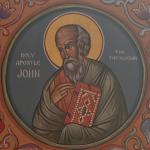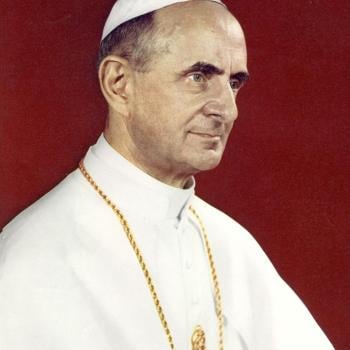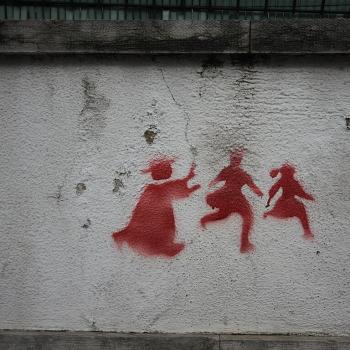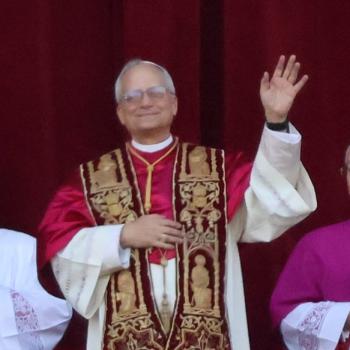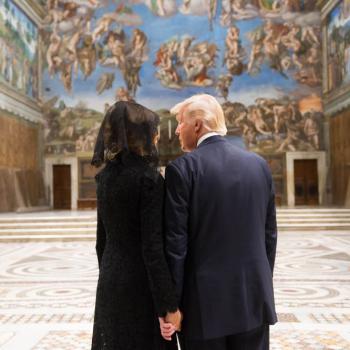
Recently, Pope Francis spoke harshly against a Catholic network which has been consistent in attacking him throughout his pontificate:
There is, for example, a large Catholic television channel that has no hesitation in continually speaking ill of the pope. I personally deserve attacks and insults because I am a sinner, but the Church does not deserve them. They are the work of the devil. I have also said this to some of them.[1]
While he did not identify the network, most assume that he meant EWTN, because it is one of the largest, most influential Catholic media sources in the world, and it indeed has consistently attacked the work of Pope Francis (even setting up a “Papal Posse” to do so). EWTN has consistently misrepresented Pope Francis, and they have done so because their politics and ideology cannot accept what he has to say. Instead of showing humble respect for the Pope, listening to what he has to say, and learning from it (even with disagreement), they want no one to listen to the Pope. They want their own message to be assumed to be the only true and proper Catholic message. It seems as if they think that they are the Magisterium who has been given the authority to judge the orthodoxy of others and that the Pope should be listening to them because of it.
Some think the problem with EWTN is new. It isn’t. It goes all the way back to its foundation with Mother Angelica. She acted like she was an oracle to be listened to and obeyed while she had to obey and listen to no one. She consistently distorted the teachings of others, including bishops, as a way to prop herself up. She was unwilling to be corrected, though if she was forced to do so, she would do so with the spirit of rebelliousness kept intact. For example, when she misrepresented Cardinal Mahony’s eucharistic beliefs, suggesting he denied the teaching of the real presence, she was ultimately made to apologize – and she did so in such a way as to make it as if she was still the one who had been wronged (and that God had favored her by giving her a miraculous healing). She had learned her lesson – the Vatican would not back her, and indeed, the Vatican had taken notice of her and her network. She wanted EWTN to be what determined the future of Catholic thought, to influence Catholics in the United States and around the world; and so, when the Vatican started an investigation with the network, she did what she could to divest it from its religious foundations and gave it over to a secular board of governors who could then ignore the directives of the Vatican. Joan Tardif, reviewing a book on the life of Mother Angelica, related what happened:
The Visitor, Archbishop Roberto Gonzalez, concentrated on three things: the ownership of the network, the monastery’s right to give property to EWTN, and, since she had never been elected, the legitimacy of Mother Angelica’s authority as an abbess. Gonzalez contended that everything Angelica had done was invalid because she had not secured appropriate permissions. Before the Visitor could write his report, Mother Angelica decided that to protect EWTN she had to sever all of her ties to the network. Fearing that she might be ordered to make changes to the network or its board, or even to appoint a “progressive” successor, Mother Angelica resigned as CEO and Chairman of the Board of EWTN on March 6, 2000. Accepting her resignation, the board altered its bylaws so that the abbess and vicar of the monastery would no longer hold positions on it. Although he had not believed it at first, Arroyo came to the conclusion that “stratagems were fermenting and plans were afoot to capture her network”. But, by resigning, Mother Angelica had defeated her enemies within the Church and entrusted her network to lay people who shared her orthodox views.[2]
Thus, long before Pope Francis, during the pontificate of Pope St. John Paul II, Mother Angelica and EWTN was setting itself up to be a rival teaching authority to the Pope. It is not merely Pope Francis, but all Popes, which have had occasion to experience the manipulation and misrepresentation of their ideas to the public, so that the general public would know only what EWTN told them. Those who engaged EWTN’s media presence and used it as their main resource for their faith developed an imperfect, ideologically bound understanding of Catholicism.
The present fight EWTN has with Pope Francis is only the continuation of what Mother Angelica started. EWTN has not lost its way from the vision Mother Angelica had for it. There has always been a sense that EWTN wanted power for itself to influence and direct the Catholic Church; this is why, for example, she fought hard against the bishops in the United States, so that she could be seen as the one with ecclesial authority instead of them (and so, make sure no one paid attention to the bishops when they tried to set up their own rival network).
Not everything EWTN has said or done has been bad. The problem is that evil always uses some goods to hide itself and thwart the greater good. Spiritual delusion, prelest, gets in the way of people who thinks so much of themselves they are unwilling to accept criticism. Mother Angelica did not want to look weak. She looked powerful when she dished out criticism, but she thought she would look weak and without authority of her own if she was willing to accept criticism from others. This continues to be the sentiment EWTN provides to the world, while Pope Francis, in his criticism of EWTN, shows himself different, because he acknowledges he is imperfect, that he needs correction from others. Perhaps, for their own good, EWTN should listen to other words Pope Francis recently gave, words spoken to those who would lead lay movements and associations, saying that they should avoid two great pitfalls, the first of which is the lust for power:
The first is the “lust for power”, when this lust for power makes you change the nature of service in governance. How many times have we made others feel our “lust for power”? Jesus taught us that the one who commands must become like the one who serves (cf. Lk 22:24-26) and that “Whoever wants to be first must be last of all and servant of all” (Mk 9:35). Jesus, in other words, overturns the values of worldliness, of the world. [3]
The other is disloyalty:
Then there is another obstacle to true Christian service, and this one is very subtle: disloyalty. We encounter it when someone wants to serve the Lord but also serves other things that are not the Lord. And behind other things, there is always money, is there not?[4]
EWTN shows itself falling for both errors, with money, now, being a leading influence on what it says and how it says it. EWTN, if it wants to be an authentic Catholic network, needs reform; it needs to stop seeking power and authority for itself, and it needs to divest itself from all its monetary interests. Then, hopefully, it will be willing to listen to what the Holy Spirit is telling the church in and through the current papacy instead of trying to find every way it can to reject that teaching and keep building itself up as the Pope’s rival. This problem is not new. It is the problem EWTN has had since its inception.
[1] Pope Francis, “’Freedom Scares Us’: Pope Francis’ Conversation with Slovak Jesuits” in La Civilta Cattolica vol. 5 no. 10 (9-21-2021). Ed. Antonio Spadaro SJ.
[2] Joan Tardif, “Mother Angelica: The Remarkable Story of a Nun, Her nerve and a Network of Miracles” ” in The Free Library (2005).
[3] Pope Francis, “Address to the Participants In the Meeting of the Moderators of Lay Associations, Ecclesial Movements, and New Communities” (9-16-2021). ¶5,
[4] Pope Francis, “Address to the Participants In the Meeting of the Moderators of Lay Associations, Ecclesial Movements, and New Communities” (9-16-2021). ¶6,
Stay in touch! Like A Little Bit of Nothing on Facebook.
If you liked what you read, please consider sharing it with your friends and family!



